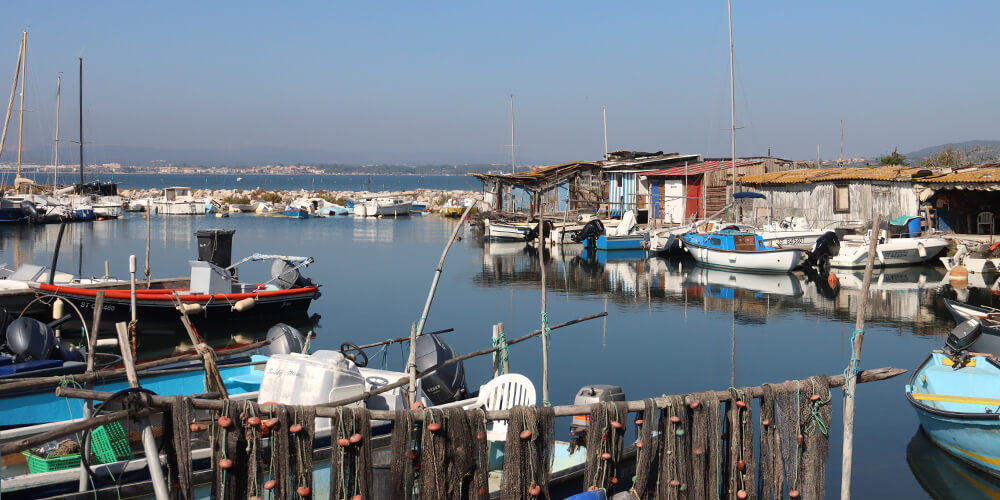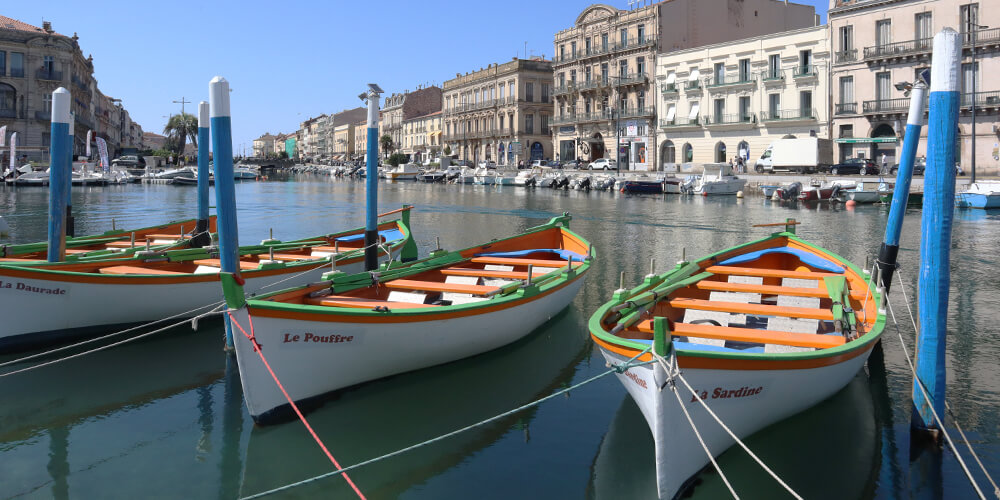
Created as a maritime outlet for the Canal du Midi in 1666 and now one of the most important fishing ports on the French Mediterranean Sea, Sète has a fantastic down-to-earth vibe. However, this seaside town also has a more romantic side and is known as the ‘Venice of Languedoc’ because of its many canals. Culinary pleasures are also guaranteed due to it being so close to the sea and the Italian influences. So, let me take you on a closer exploration of Sète to discover its true soul.
Mont Saint-Clair
Our first stop is on the top of Mont Saint-Clair to get the best view of Sète. If you’re feeling energetic, you can walk up to the summit from the town centre on a fair hike that takes about half an hour. However, you can also drive up if this is too much activity for you or if it is too hot. The town stretches up the flanks of this modestly sized hill of 183 metres. From the top, you can gaze out over the Med on your right and the Thau Lagoon on your left. Sète will unfold right in front of you, with Le Môle Saint-Louis and its lighthouse clearly visible. You can even spot the quaint district of ‘Pointe Courte’ in the distance. Climbing the steps to the rectory’s roof terrace next to the church will also give you a breathtaking 360-degree view of the region.
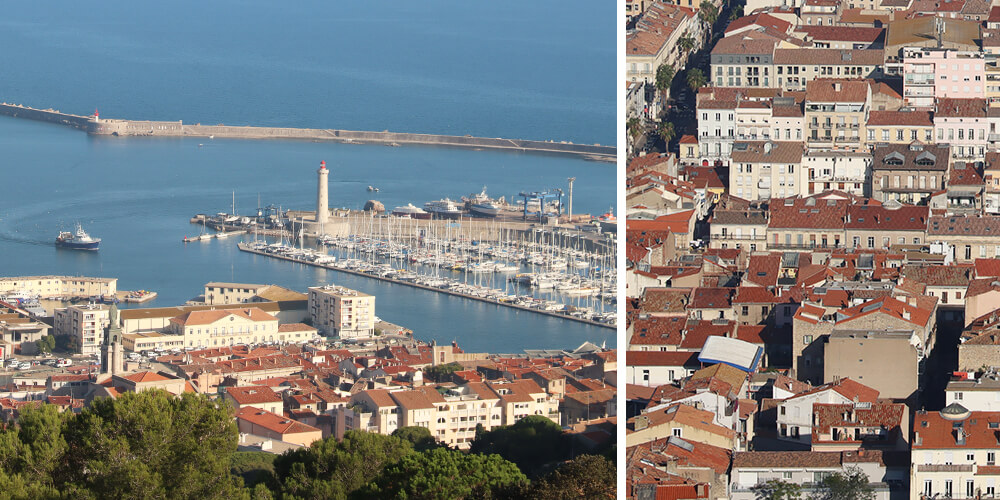
Chapel and maritime cemetery
Since you’re already at Mont Saint-Clair, it’s worth taking a peek into the Notre-Dame-de-la-Salette Chapel. This humble little church, built in 1861, has played a significant role in many fishermen’s families’ lives. Inside, you will find brightly coloured frescoes and murals that represent their life at sea. A bit below the summit is another important landmark in Sète’s history: the cimetière marin, or the maritime cemetery. Here, melancholic thoughts flutter upon the wind and over the final resting places of fishermen and locals overlooking the Mediterranean Sea. Two of Sète’s famous sons are buried here: poet Paul Valéry and actor/theatre director Jean Vilar.
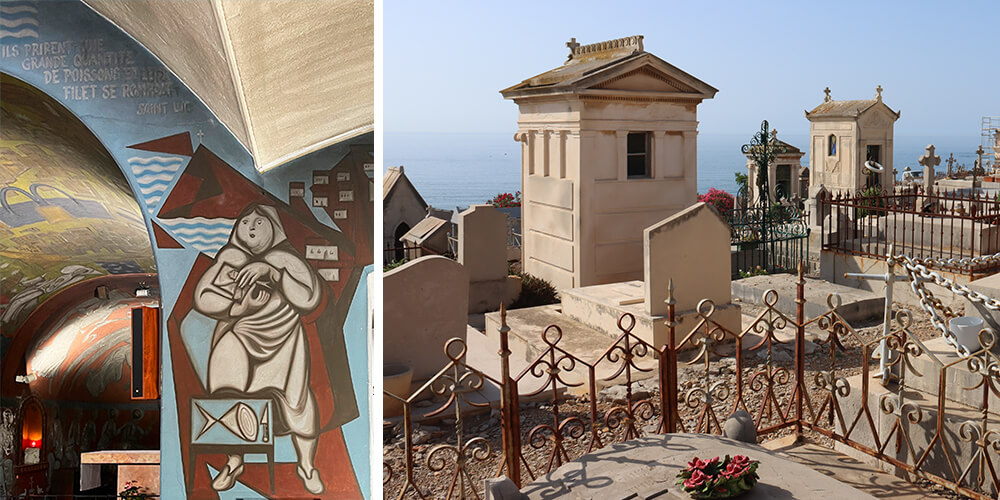
Town centre
Although the town is medium-sized, you can easily spend some time roaming the streets of Sète. There are lovely shops, yummy restaurants and funky street art to check out. The actual town centre, with most of the shops and restaurants, is centred between the Place Aristide Briand (currently under construction until the end of 2025) and the square in front of the town hall on Rue Paul Valéry. Although you will also find many restaurants and shops along the Quai Général Durand. Don’t miss out on the covered market, Les Halles, at Rue Gambetta! You can expect a lot of seafood here, but there is more than just delicious seafood. If you want to buy good Italian food, this is the place to go, as many Sètois have Italian blood flowing through their veins. They say you’re only a real Sétois if you have Italian ancestors.
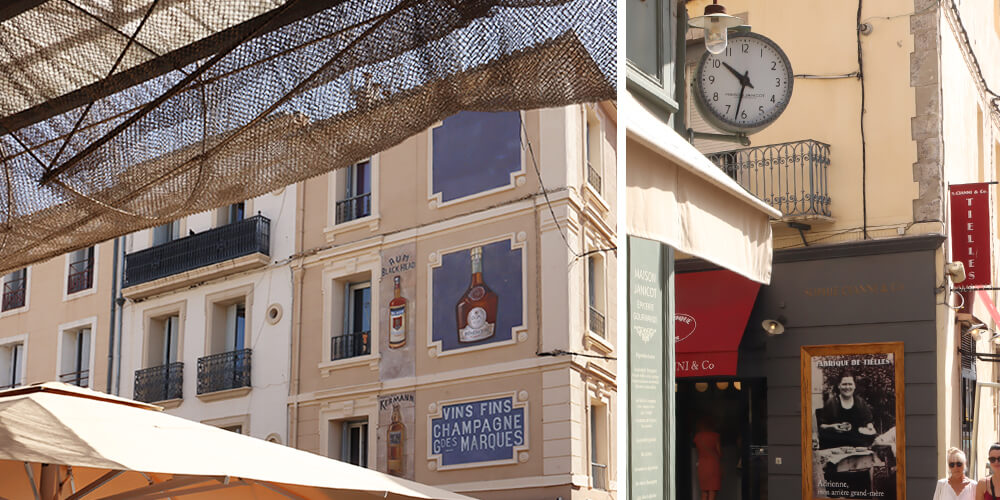
Canals
Sète is a town of traders and fishermen, and the water has played an important role ever since the town was built in 1666. The famous Canal du Midi, created by Paul Riquet to connect the Mediterranean Sea with the Atlantic, ends in the Étang de Thau. The town of Sète and its maze of canals arose to link the Thau lagoon with the sea. The arrival of the fishing port also meant the birth of a local tradition: ‘joutes‘ or water jousting. Sète organised its first water jousting tournament on the 29th of July 1666 to celebrate the foundation of the port. This spectacular event is still held annually in August during the ‘Fête de Saint Louis’. Even today, water jousting is more than just a tradition, as it really reflects the Sétois soul.
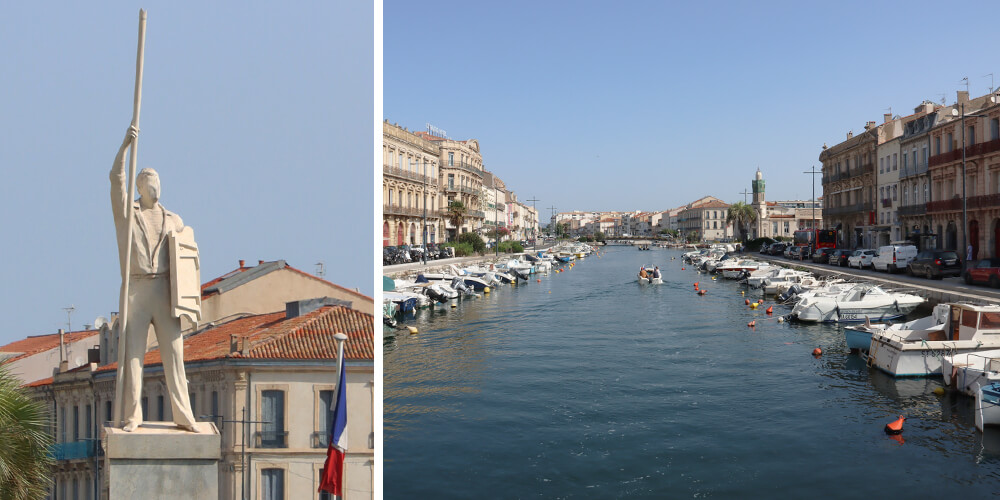
Lighthouse
The lighthouse proudly stands at the end of Le Môle Saint-Louis, Sète’s pier. This pier was the town’s first major construction project when building Sète back up in the 17th century. The Phare Saint-Louis originates from around 1680. Unfortunately, German mines destroyed the lighthouse in 1944 during World War II. It was eventually reconstructed in 1948. Hence the date above the entrance. At the tiny tourism sub-office downstairs, you can buy a ticket to climb the 126 steps of the beautiful spiral staircase. At the top, you will have a magnificent 360-degree view of Sète, including Mont Saint-Clair. And if you look closely, you will find an extract from Paul Valéry’s poem ‘Birth of Venus’ (Naissance de Vénus in French).

Pointe Courte
This small fishermen’s neighbourhood lies in the north of Sète, between the Canal Royal and the Étang de Thau lagoon. Ever since the mid-19th century, the primary means of income for this area has consisted of fishing and oyster farming. After Sète’s railway was developed, a few strips of wasteland connected to the Étang de Thau were left. So, this was the perfect spot for fishermen to build sheds to store their fishing nets, create a small port, and in the end to settle with their families. And that is what this neighbourhood is still about, if you take the time to absorb the many still lifes of drying fishing nets and traps. If it were the decor for a movie, you would say it was overdone. But here at La Pointe Courte, it is just part of life, which makes it such a magical place.
